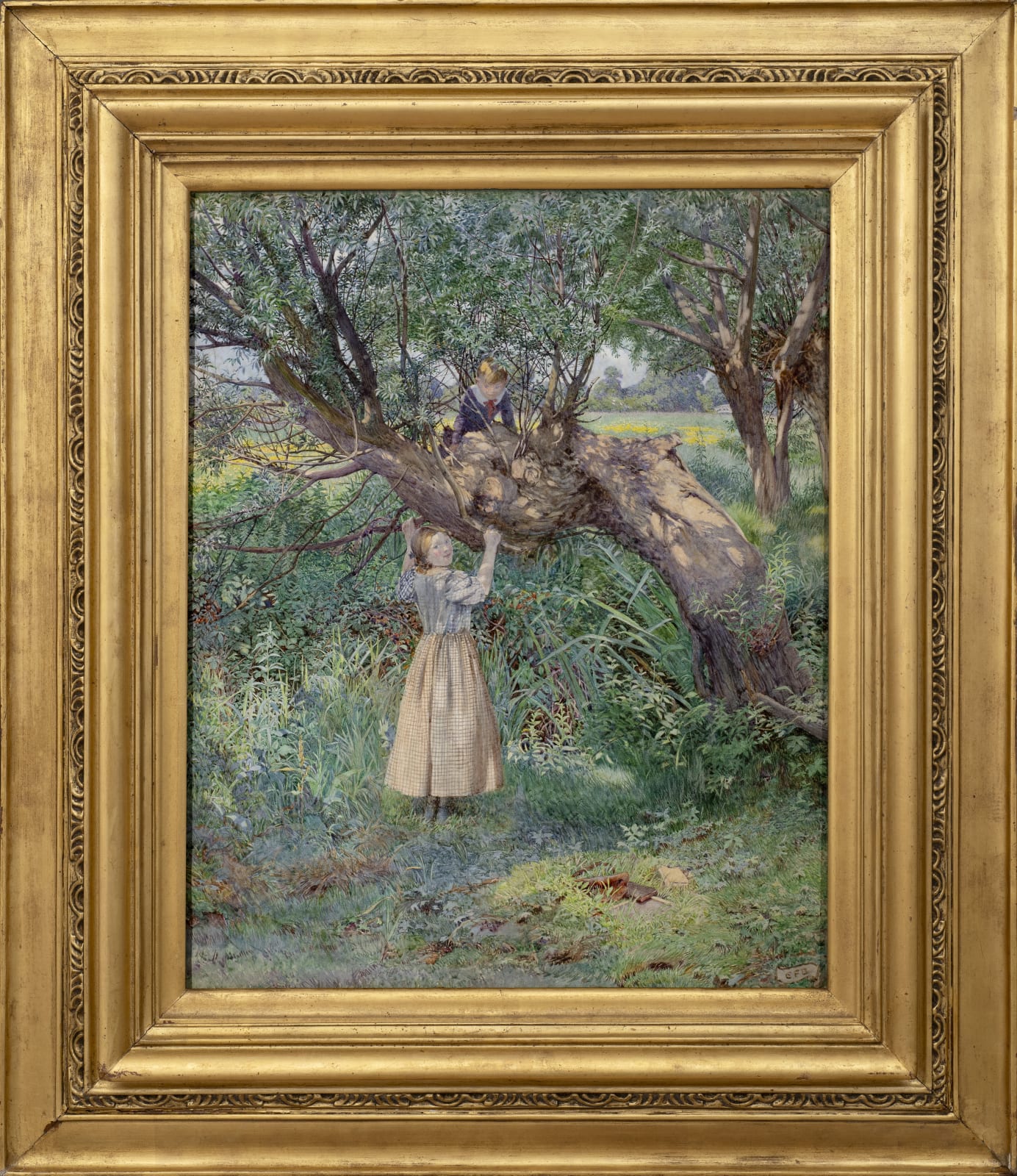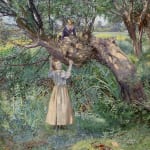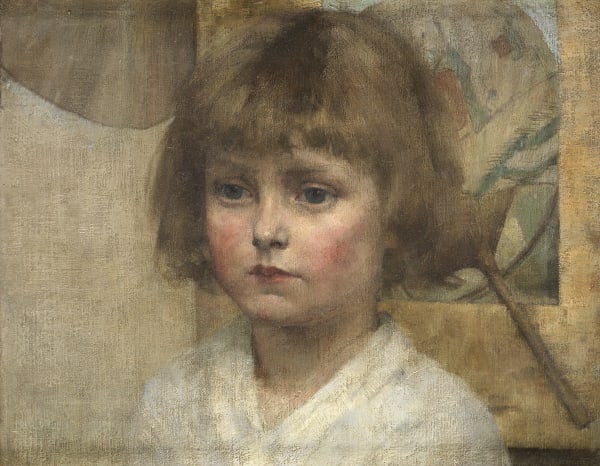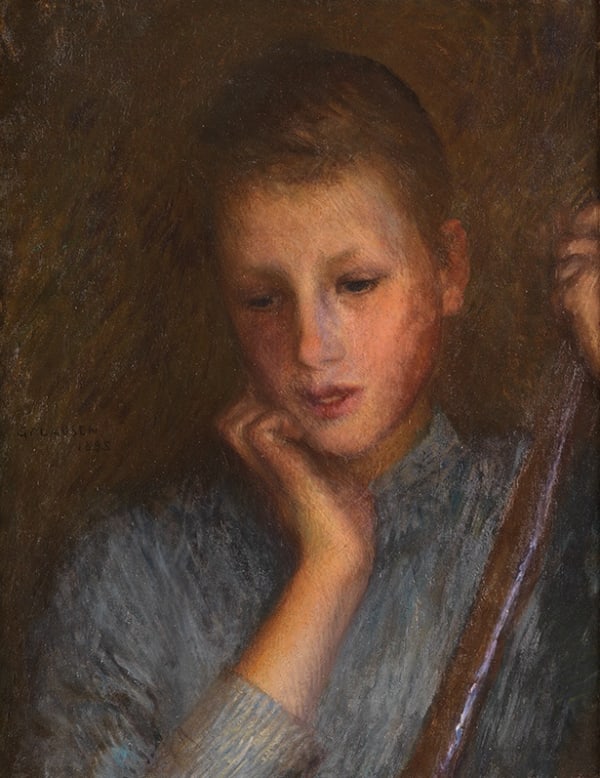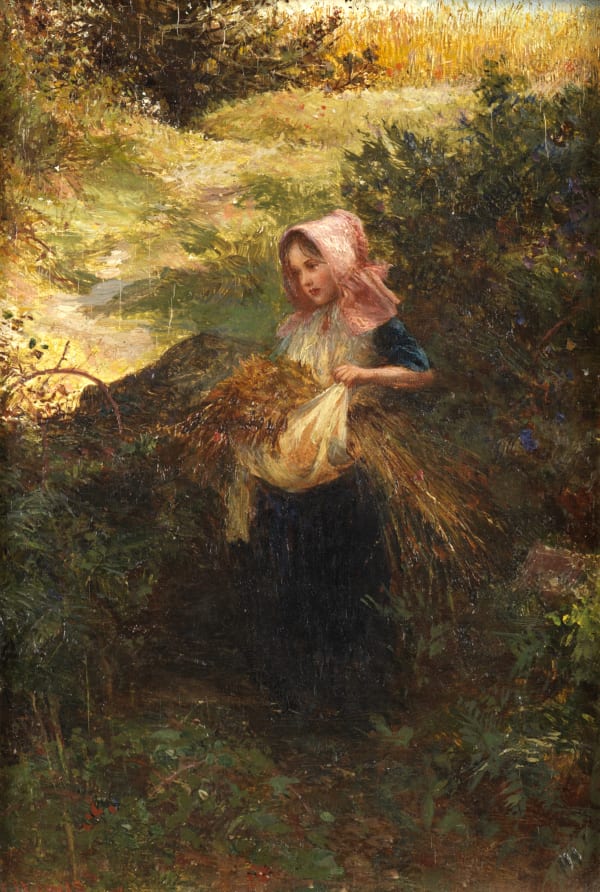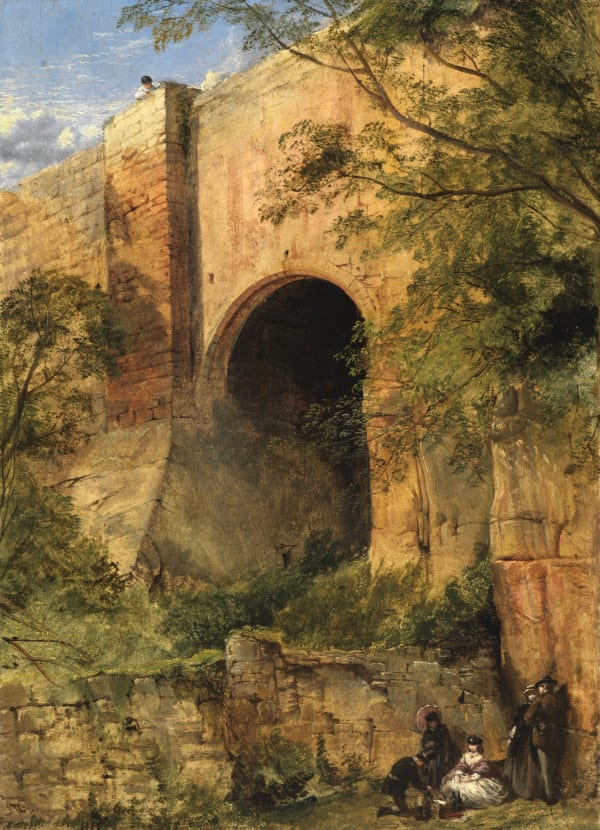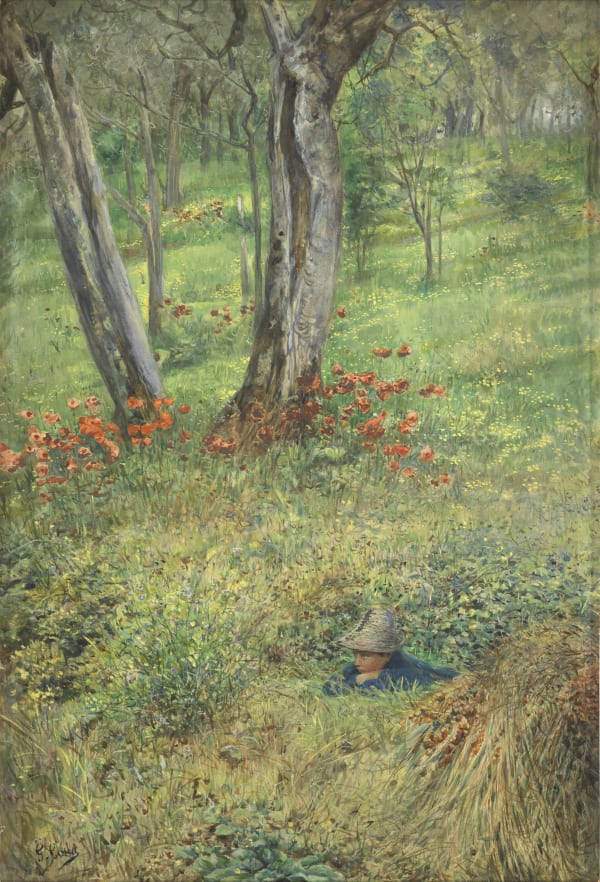Eleanor Fortescue-Brickdale (1871-1945)
Provenance
The artist's nephew, Claud Kirby
Exhibitions
Royal Watercolour Society, Winter Exhibition, 1916, no 143;
Liverpool, Autumn 1924;
Ashmolean Museum, Centenary Exhibition of Works by Eleanor Fortescue-Brickdale 1872-1945, Dec 1972 - Jan 1973, no 17
Literature
Centenary Exhibition of Works by Eleanor Fortescue-Brickdale, Ashmolean Museum, p 9, cat no 17
When this picture was exhibited in the Royal Watercolour Society’s Winter Exhibition in 1916, in the darkest months of the First World War, the new (to London) women’s magazine Vogue noticed it: [In the middle of the Nineteenth Century] ‘the whole of the art life in England was revolutionised by the Pre-Raphaelite movement. Now only a few little ripples from the wash of that great wave are to be perceived in London picture exhibitions. In this exhibition Miss Fortescue-Brickdale seems to plant us right back into the centre of the movement – seems to make believe that it is not yet spent itself. Her watercolour Truants is in this respect a pictorial curiosity, desiring to charm by old association and perhaps succeeding.’
Fortescue-Brickdale was in a sense a victim of her own success, her exhibitions of 1901, “Such Stuff as Dreams are made of!” at Dowdeswell’s, and her show ten years later at the Leicester Galleries of 28 Tennysonian subjects, and her many illustrated books, having cast her as a ‘Pre-Raphaelite Revivalist’. However, the truants in our picture are modern children, with their school books discarded beneath the tree in which they are playing, as if Fortescue-Brickdale wanted to get away from Pre-Raphaelitism with a contemporary subject, just as the children in the picture feel the pull of nature away from schooling. On the other hand, the amazing, busy detail of the undergrowth and of the tree are Pre-Raphaelite, and the work is certainly a tour de force of technique; as her biographer Pamela Gerrish Nunn has observed in A Pre-Raphaelite Journey (p 18), she painted with ‘complex interlocking spaces and a love of pattern, detailed costuming and vivid jewel-like colour’. She loved the patchwork of leaves, mysterious shadows and the play of light through woods, and the bark of a gnarled tree. Well-born and well-connected, ‘she was always a welcome guest in the houses of her many friends whose houses and gardens or the surrounding countryside appear as backgrounds in her pictures’ (Ashmolean, Centenary Exhibition of Works…, p 3). Her older brother’s home at Newland in the Forest of Dean was a regular refuge. ‘Even with a good dealer [Ernest Brown, of the Leicester Galleries], as the war dragged on the future of artistic patronage, especially the traditionalist taste on which Fortescue-Brickdale relied, must have seemed precarious, not only because of the financial disarray but because of the sea-change in British life generated by the disillusionment of the war years. Dealing with the war experience took various forms, and Fortescue-Brickdale was commissioned to create a kind of testimonial on it when various women’s organisations employed her to create an illuminated address [sent from ‘The Daughters of Britain’] to Queen Mary to mark the Royal couple’s silver wedding in mid 1918’ (Nunn, p 27).
-
 Frederick Weekes (1833-1920)The Haunted Glen, the Intruder£4,500
Frederick Weekes (1833-1920)The Haunted Glen, the Intruder£4,500 -
 Edward Ridley (1883-1946)A ShadowPOA
Edward Ridley (1883-1946)A ShadowPOA -
 Maurice William Greiffenhagen (1862-1931)A StudyPOA
Maurice William Greiffenhagen (1862-1931)A StudyPOA -
 Sir George Clausen (1852-1944)PensivePOA
Sir George Clausen (1852-1944)PensivePOA -
 Edward Robert Hughes (1851-1914)Nora Beausire, daughter of the Liverpool art collector£4,800
Edward Robert Hughes (1851-1914)Nora Beausire, daughter of the Liverpool art collector£4,800 -
 Edward Clifford (1844-1907)The Gift£6,500
Edward Clifford (1844-1907)The Gift£6,500 -
 William Lee Hankey (1869-1952)Light in the Cottage£2,800
William Lee Hankey (1869-1952)Light in the Cottage£2,800 -
 Charles James Lewis (1830-1892)Fresh from the Meadow£4,800
Charles James Lewis (1830-1892)Fresh from the Meadow£4,800 -
 Thomas Creswick (1811-1869)Roslyn Castle: PicnicPOA
Thomas Creswick (1811-1869)Roslyn Castle: PicnicPOA -
 Giovanni Costa (1833-1893)A Woodland Hideout£4,800
Giovanni Costa (1833-1893)A Woodland Hideout£4,800

